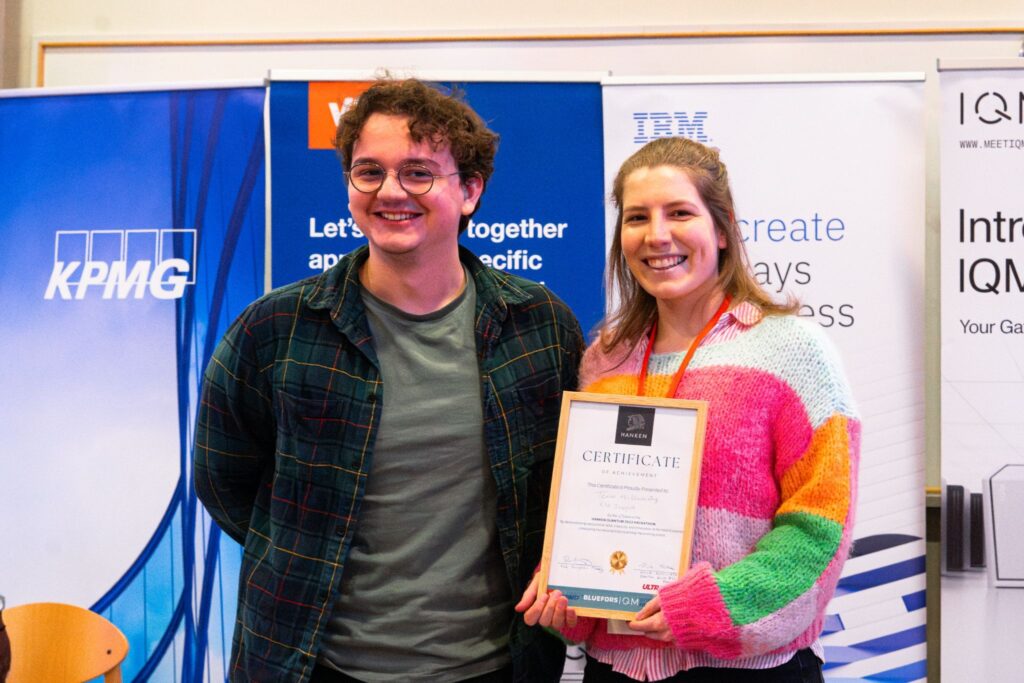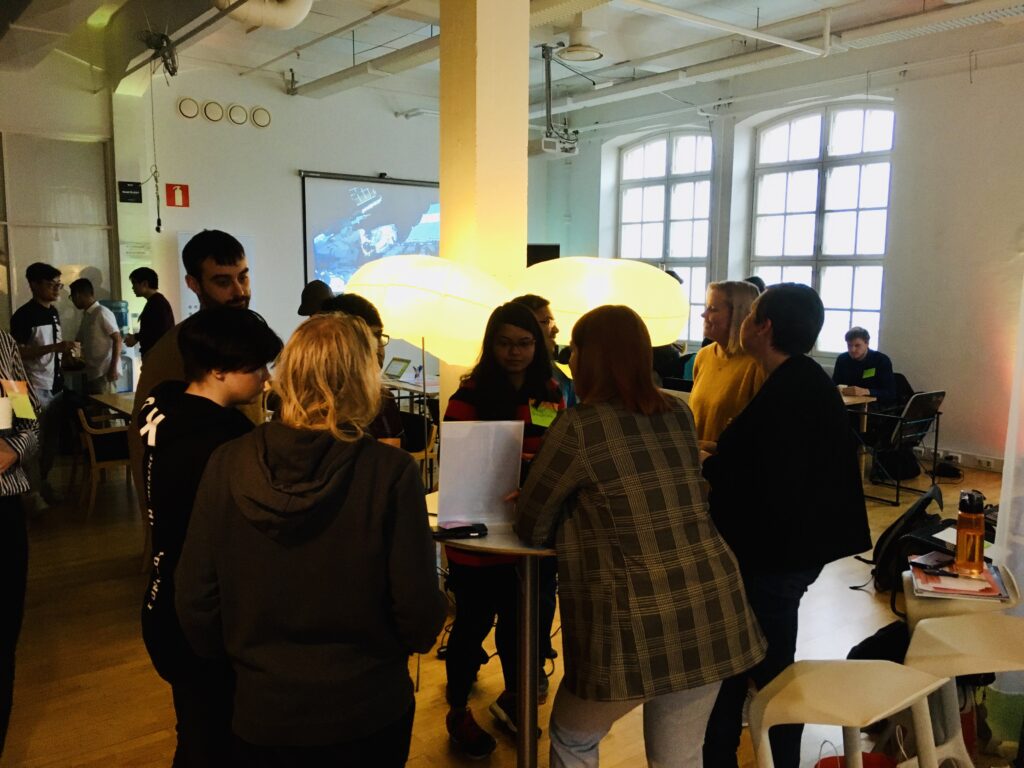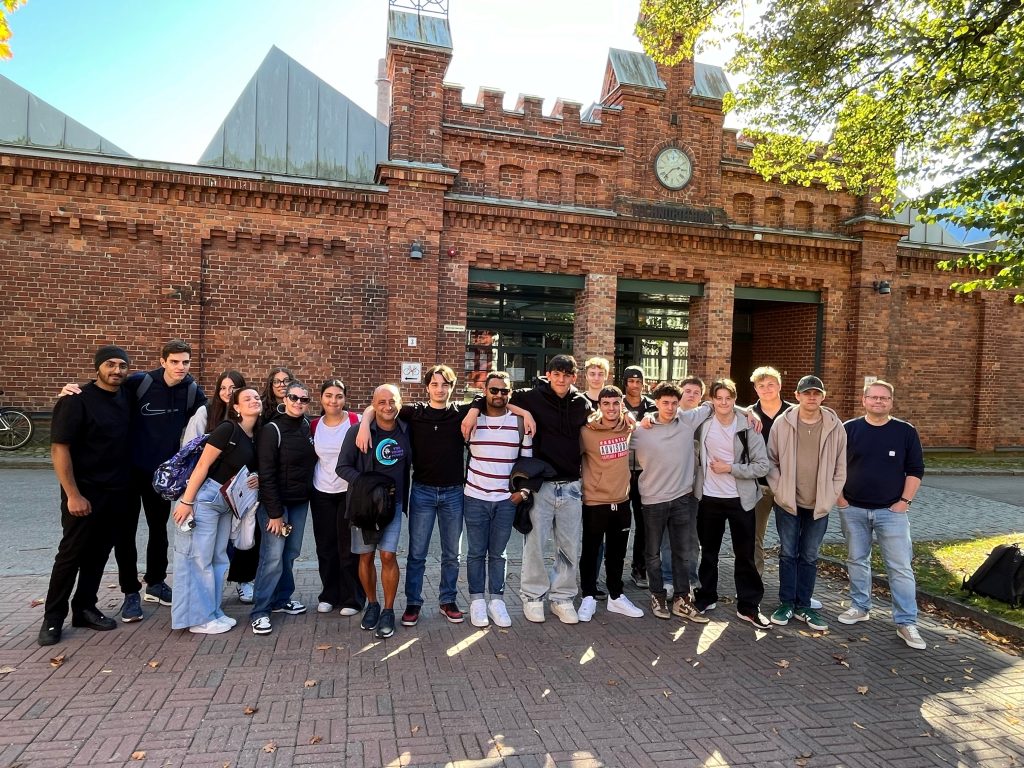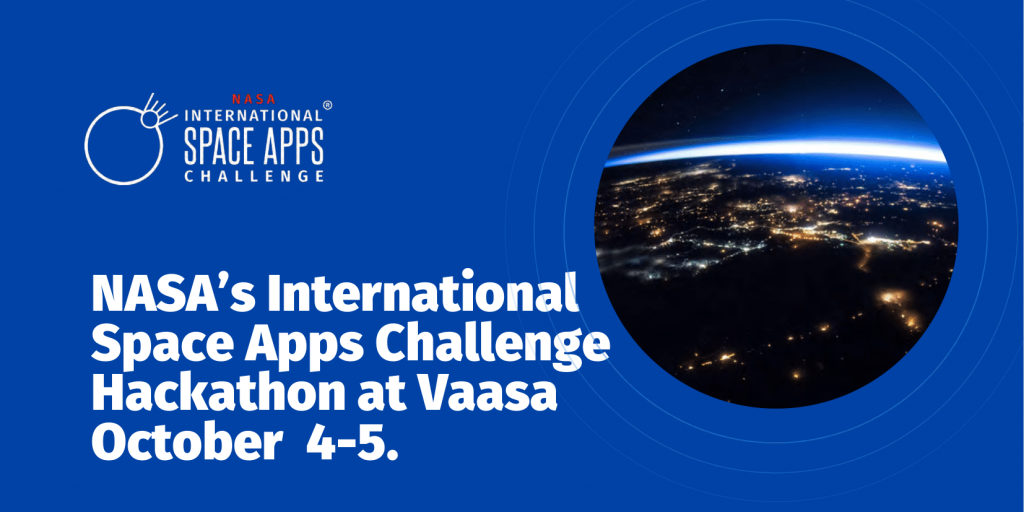The recently concluded Hanken Quantum Hackathon, organized by Hanken’s Quantum Lab and Ultrahack in Helsinki from October 24th to 26th, aimed to discover new and innovative solutions on how to use quantum computing in a sustainable manner in the finance industry.
The team consisted of five members: Cem Özcan (doctoral researcher), Maike Söderholm (graduate student) and Jyri Nieminen (programmer) from University of Vaasa, along with Reijo Jaakkola (doctoral researcher) from Tampere University, and Andrés Damián Muñoz Moller (doctoral researcher) from the University of Jyväskylä. The latter two persons outside of the University of Vaasa, Reijo and Andrés, were recruited to the team when Cem met them at the doctoral cruise he took a while back.
Building the Future of This team with participants from the University of Vaasa stood out in the hackathon with their submission, “Unlocking ESG insights: Utilizing AI, quantum data, and geospatial framework for environmental footprint assessment of companies”.
Behind the Scenes
Jyri Nieminen tells that the idea for the team’s submission came together a few weeks before the hackathon, where their team looked through all the challenges proposed for the hackathon.
Jyri also explains that the team narrowed their options to two topics, but since he and Cem had already worked with ESG and satellite data on two previous hackathons last year (Cassini Hackathon 2022 and Hanken Quantum Hackathon 2022), they felt more comfortable going for something similar again.
“The challenge itself was titled USE AI & QUANTUM DATA TO ESTIMATE SMALL AND MEDIUM SIZE COMPANIES ESG FOOTPRINT. That’s why we decided to take the work we had done before and expand it a little bit and add machine learning and quantum computing into the mix”.
The teamwork flowed seamlessly, with each team member naturally falling into their roles and contributing effectively to the project.
“I focused on the user interface for the demo, Cem went looking for usable data, Reijo did the machine learning, Andrés figured out how to implement quantum computing and Maike found a great template for a business plan and started working on that and the final presentation. When anyone was done with their thing, they’d move on to either help someone else or work on the presentation,” says Jyri.
The team set up a Discord server, which acted as a platform for continuous discussion and idea-sharing.
The two biggest challenges
For the team, the biggest challenges they came across during the Hackathon were the business plan and the presentation, that were overcame with teamwork and help from the mentors.
“The business model is always challenging for projects like this, since it’s very difficult to justify why companies should pay for a service that can potentially prove that what they are doing ESG-wise isn’t really working. Now, it does help that the EU is pushing to make ESG reporting mandatory and we were focusing on small and medium-sized companies that may not have access to the traditionally quite expensive services since it requires a lot of manual work. Maike had a great template for a business plan which we filled out. We knew that the model should be a SaaS (Service as a Subscription) since that’s the industry standard and the only one that makes sense. However, that template really helped us find a reasoning and justification on why we were doing it like this”.
The second big issue for the team was the presentation. Since all the team members has an academic background and they are used to writing for their peers – they struggled to adapt their communication style for a broader audience at the hackathon. While some panel members were quantum experts, others were not familiar with the technologies.
“Thankfully the mentors at the hackathon really hammered in that mentality of ‘Explain what you’re doing and keep it simple.’ and Cem also kind of kept us in check, so that when we’d start getting too technical in the presentation he’d reel us back”, Jyri explains.
Hackathon provided quantum computing tools for the participants, and these were used to transform a traditional machine learning model into a quantum version by Reijo and Andrés.
From humble beginnings to triumph
The two hackathons that Jyri and Cem worked on with a similar idea; using satellite data to validate ESG ratings (or the environmental part at least, Jyri emphasizes), earned them the 2nd and 3rd places in the competitions. However, the Hanken Quantum Hackathon was approached by the team with lower expectations. because with this one the team members felt a little bit out of their element. Idea and the challenge sounded interesting, so the team went to the competition with a mindset of having fun and “dipping the toes to test the ocean” as Jyri said.
The team viewed their participation more as a learning experience, and felt a little bit unsure of their submission, but knew that all the team members did their best.
Despite the team’s uncertainty about their chances of success, out of the 15 teams that competed in this hackathon, their submission emerged victorious and won the “Best Tech Solution” award.
When asked about if there’s any plans to continue with the same topic, Jyri tells that the team has talked about developing this into a project.
“Everyone’s interested in developing this further and learning more, so it would be exciting to get actual funding for something like this”.
Congratulations!
The partners of this Hackathon were Hanken School of Economics, VTT, KPMG, IQM, Bluefors, Business Finland, IBM, and CSC.
In the article picture are Cem Özcan and Maike Söderholm with the winner’s certificate of achievement. Photo: Ultrahack.




